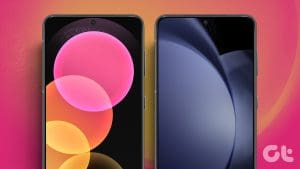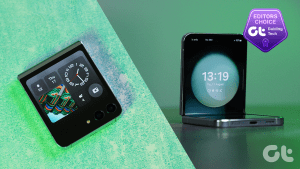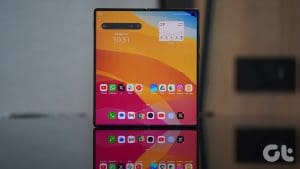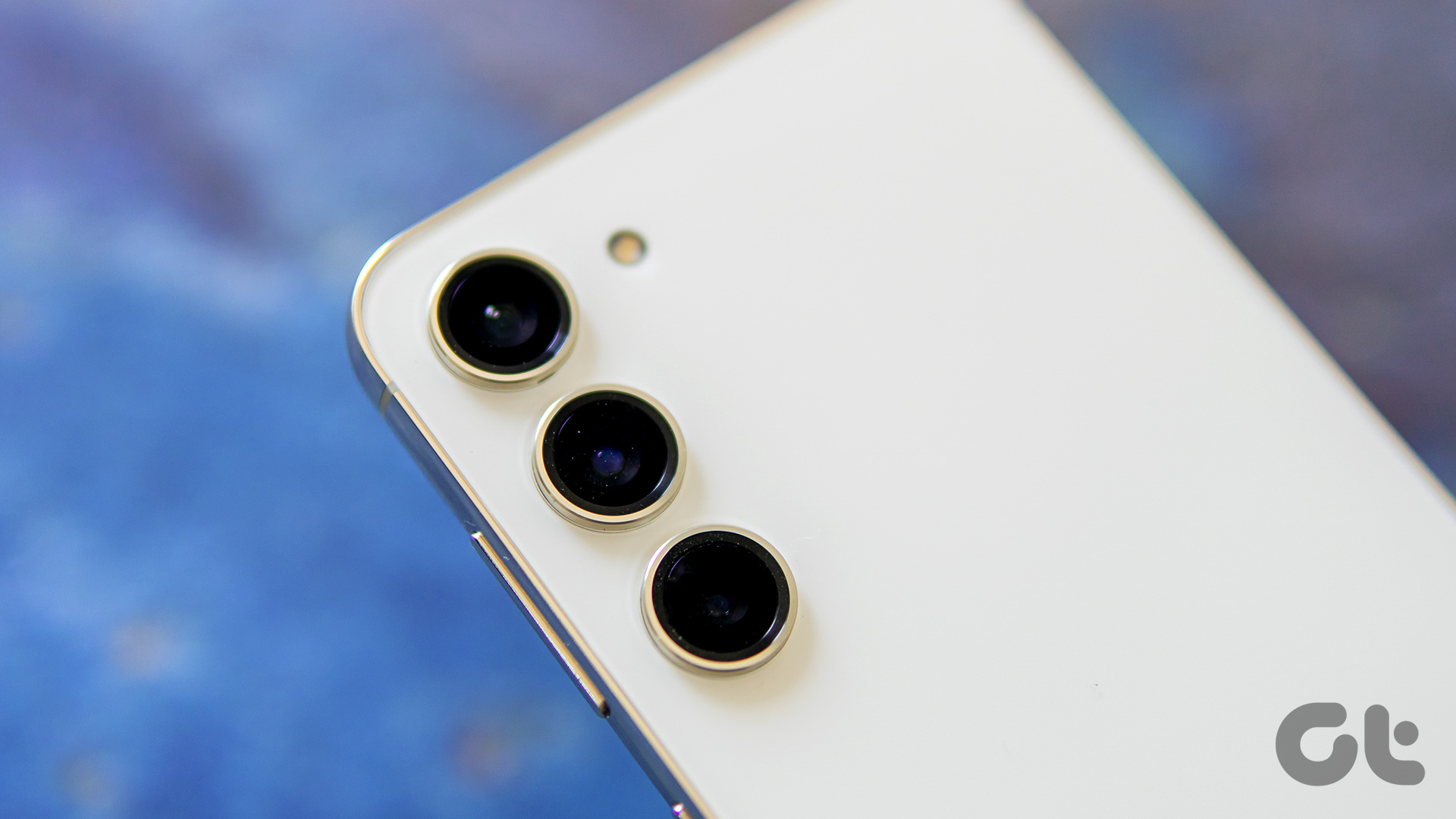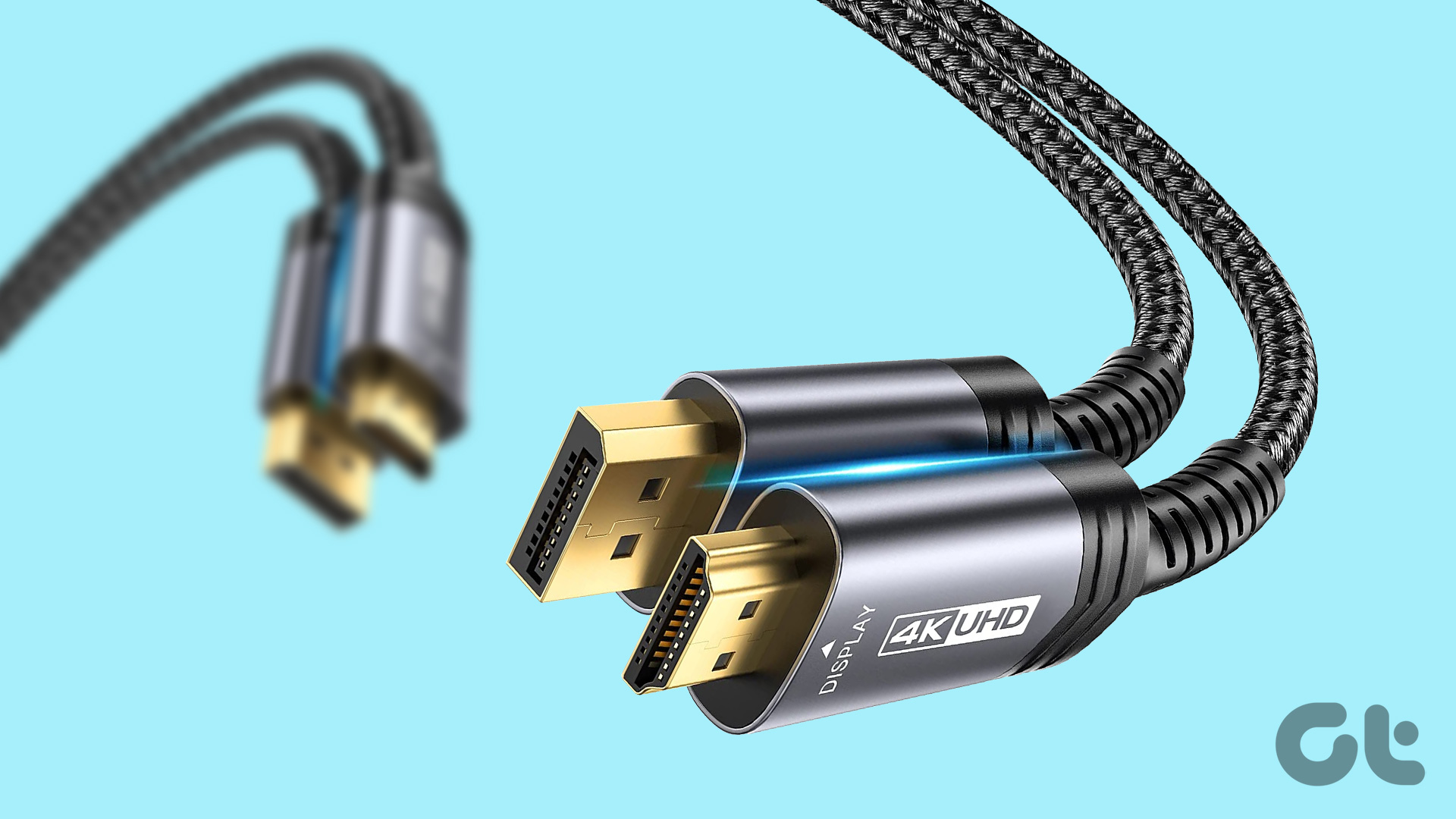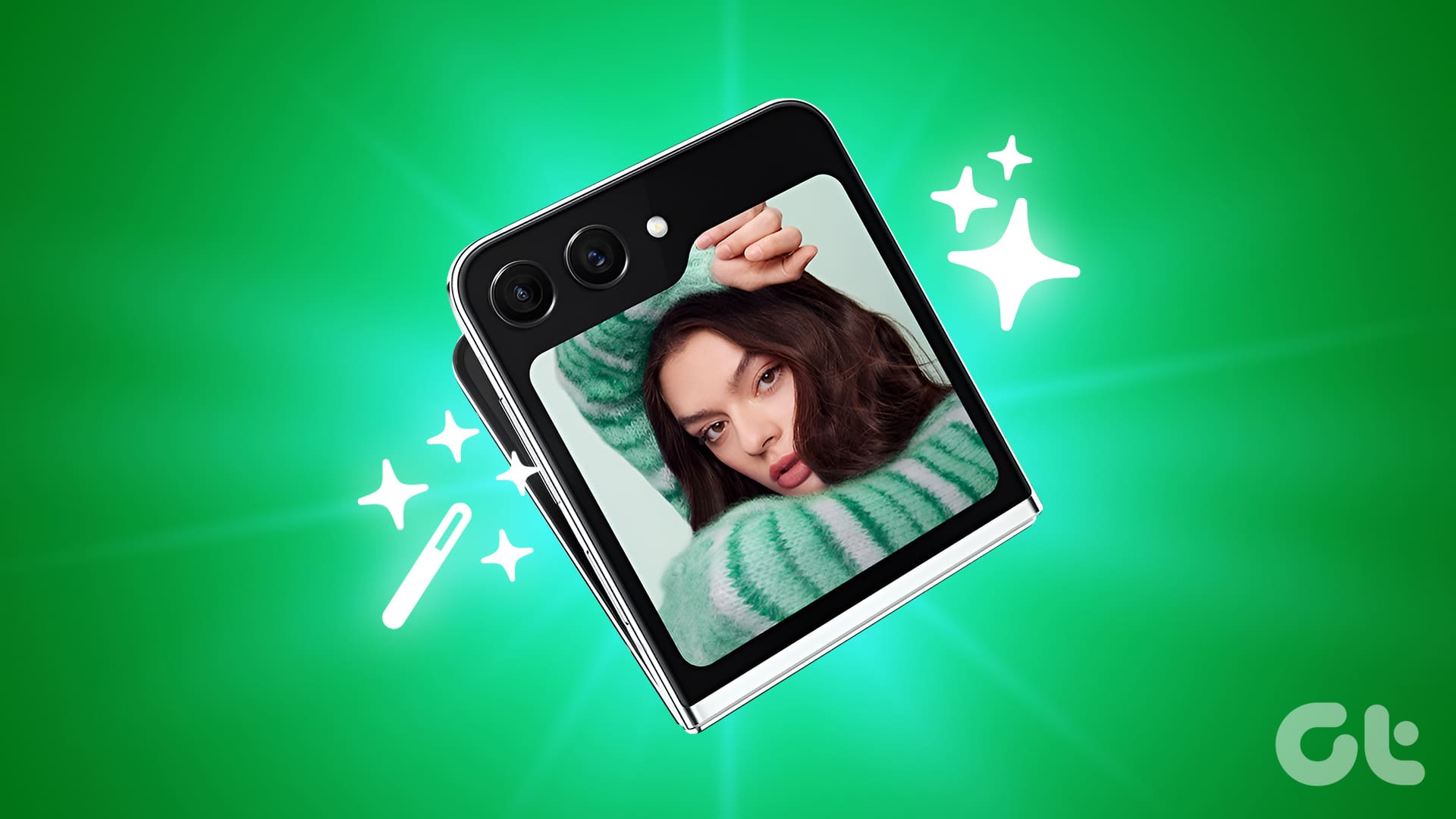We’re halfway into 2024 and Samsung’s launched its latest book-style foldable, the Galaxy Z Fold 6. It’s slimmer, more durable, lighter, faster, and features a more refined design than its predecessor which launched around the same time last year. But is it everything that you should be looking for in your next smartphone? We try to answer that while also telling you about what we think is good, bad, and quite frankly ugly with Samsung’s new flagship foldable phone.
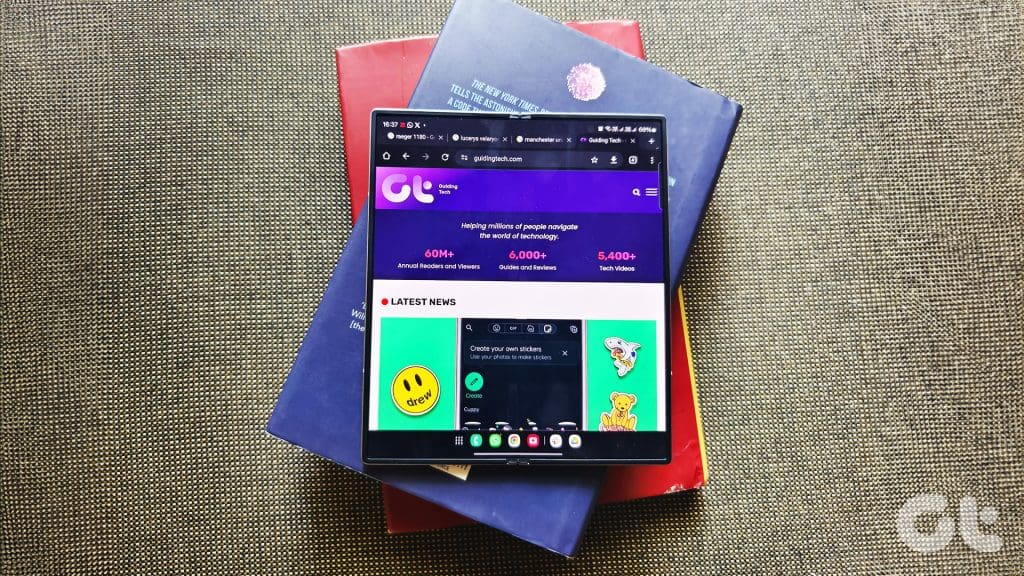
Samsung Galaxy Z Fold 6: The Good
Well, let’s start with what makes the Galaxy Z Fold 6 tick for me — the design. Compared to the rather heavy Z Fold 5 which weighed in at 253 grams, this year’s Z Fold 6 is just 239 grams. Interestingly, this number also makes it just a few grams heavier than the single-screened S24 Ultra. Suffice it to say, this cut down in weight makes the Z Fold 6 more manageable and makes it easier to carry around in your pocket.
However, the weight of the Fold 6 is just one aspect of the design story. When folded, the new phone is thinner than the Galaxy Z Fold 5, which again helps make it easier to slide it inside your pocket. This form factor also translates to the phone feeling slimmer when unfolded. However, the latter is not a very big change. So much like us, you’re not likely to notice this in day-to-day use. Regardless, it’s still a welcome change nonetheless.
Another area where Samsung’s improved is durability. From the first foldable launched in 2019, there have always been question marks over both the short and long-term durability of the Z Fold line-up of devices from Samsung. This year though, Samsung finally appears to have turned a page on this chapter by bringing what in our opinion a very durable and sturdy device.

The Z Fold 6 is protected by Gorilla Glass Victus sheets and durable glass layers. Sandwiched between these is a dual rail hinge combined with a reinforced folding edge, which Samsung claims should help distribute the shock of external impacts. Another point to consider is the IPX8 rating, which offers added reassurance.
These upgrades, especially the major ones made to the mechanism of the hinge, make the Z Fold 6 a definite upgrade over something like a Z Fold 4 which did suffer from its fair share of issues in this department.
In our time with the Z Fold 6, we also really liked what Samsung has done with both the cover and main screens of the phone. Both these panels now feel bigger and better than ever. The cover screen at 6.3 inches gets some extra real estate thanks to Samsung shrinking the bezels on the device.
While the upgrade isn’t drastic, and compared to devices like the OnePlus Open or the Vivo X Fold 3 Pro, the screen is still narrow, it does, however, feel much more usable compared to the one found on the Fold 5. The overall experience of typing or browsing the internet is better on the cover screen.

Its aspect ratio is still not ideal for watching videos or using productivity-focused applications, but then again, you have the larger main screen for these tasks. Apart from this, there isn’t much missing here as the display still boasts a fast adaptive refresh rate of 120Hz and a good pixel density of 410 ppi.
Talking about the main screen, Samsung’s made some interesting improvements on this one. While the size remains the same at 7.6 inches, bezels around the panel are much smaller than on the previous version.
More importantly, it’s now brighter at 2,600 nits which helps make the phone feel like a great device for watching movies and playing games. Compared to the Z Fold 5, HDR performance is also better with content from the libraries of Netflix and Apple Play shining on the device thanks to the improved display.
The Samsung Galaxy Z Fold 6 also hides a lot to like underneath the display. The Snapdragon 8 Gen 3 chipset is at the heart of most of these upgrades, with the silicon providing a solid base for all the heavy-duty processing tasks one may want to run on the phone.
This silicon is also what powers in part the host of new AI-based features that the Galaxy Z Fold 6 boasts of. For Samsung, it’s a major area of focus, and we’re happy to report that Samsung’s done a good job refining them to the point that these features are now not only usable but very helpful in day-to-day use.
Thanks to the unique design of the Z Fold 6, the Galaxy AI helps offer brilliant use cases, including accessing Google Gemini from the cover display or using advanced translation through Note Assist. Baked into the operating system are also quick and easy features for translating PDFs and an all-new transcription feature that can turn voice recordings into text rather accurately.

If you’re someone like me who travels a lot, the refined Interpreter Mode should also be quite handy. It translates conversations in real-time and the Galaxy Z Fold 6’s form factor ensures both the cover and the main display show translations in different languages almost in real time for a smoother conversation with someone you may hit a language barrier with.
Another very interesting feature that we’ve enjoyed in our limited time with the Galaxy Z Fold 6 is the Sketch to Image feature. It’s quite accurate and frankly a lot of fun to play around with. However, you do need an S-Pen to be able to enjoy it to the fullest, so if you’re an artist, investing in this separately sold accessory may not be a bad idea.
Samsung Galaxy Z Fold 6: The Not So Good!
Well, the S-Pen, or the lack of it in the box is where we finally dwelve into what is not so good with the Galaxy Z Fold 6. Since this is marketed as a productivity-focused device, it’s really strange to see the phone still not shipping with a S-Pen in the box.
Considering it’s Samsung’s 6th generation book-style foldable, I did expect Samsung to have figured out by now a way to house the accessory within the phone’s enclosure — much like on the S24 Ultra — and not dissuade buyers from getting the S-Pen for the stress of investing in an additional S-Pen case for the device if they want to get the stylus for their device.

If you’re using the main display for sketching and productivity tasks a lot, you’ll also notice that the crease on the display is still there. However, it’ll be unfair to mention that it’s now less visible than before, and thanks to the improved brightness on the device is only discernable when you’re using the device under harsh light or outdoors.
Another area where I feel Samsung could have done slightly better is in the cameras department. Apart from changing the 12-megapixel ultrawide sensor on the device, the Galaxy Z Fold 6 brings with it the same lenses that we previously saw on the Z Fold 5.






As such, the 50-megapixel primary lens remains the same and so the does 10-megapixel telephoto lens with 3x optical zoom. Granted these lenses are now backed by improvements in iterative upgrades in computational photography and more importantly, a superior Image Signalling Processor (ISP) found on the Snapdragon 8 Gen 3.






Yet, the performance uptick just isn’t enough to help the phone stand tall next to cameras on flagship devices that retail at a lower price point. This is especially true in low-light scenes when the device has a habit of spitting out images that do not feel very sharp.






Even in well-lit scenarios, the images clicked from the phone do appear to not pack as much detail as we’ve previously seen on devices like the S24 Ultra which boasts a massive 200-megapixel primary lens.
Samsung Galaxy Z Fold 6: The Ugly!
While the above-par cameras and the lack of an S-Pen are certainly things you can live with, the things we’ll mention in this section are where the Galaxy Z Fold 6 from Samsung starts to frustrate — and for no good reason.
There’s no easy way to say this, for a phone that packs a 4,400mAh battery inside, it’s a shame that Samsung has insisted on capping the charging speeds at 25W. For context, this is a number that’s 20W shy of the wired charging speed of the S24 Ultra and a massive 75W shy of the speed of the Vivo X Fold 3 Pro.

This hesitation of Samsung to keep the battery charging speeds capped to protect the long-term battery life of the phone was an understandable decision back in 2020. However, in 2024, when all competing players in the Android segment have moved much faster charging standards, this is now becoming an increasingly difficult decision for the end user to digest.
The only saving grace here is that the Galaxy Z Fold 6 offers good battery life once it’s charged. In our time when I mostly used the cover display, I could easily get a day’s use on a single charge. Using the main screen did bring the run-time down, but there’s only enough that a 4,400mAh pack can do, right?
Samsung Galaxy Z Fold 6: Should You Buy It?
On the balance of things, the Galaxy Z Fold 6 is still a very good phone. Yes, it does have a few misses, but those aside the phone does exceedingly well. From its refined design to the improved displays this new foldable from Samsung makes a solid case for itself no matter if you’re finally looking to make the switch to a foldable or if you’ve decided to upgrade from an existing foldable.
Was this helpful?
Last updated on 17 July, 2024
The article above may contain affiliate links which help support Guiding Tech. The content remains unbiased and authentic and will never affect our editorial integrity.


